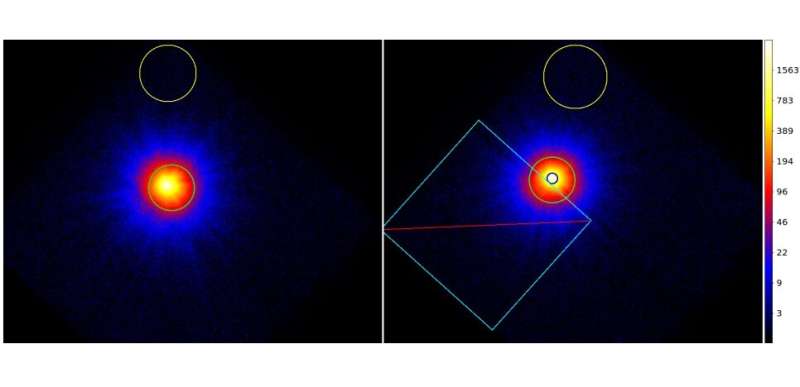January 26, 2021 report
Study sheds more light on the properties of the X-ray pulsar XTE J1858+034

Using NASA's Nuclear Spectroscopic Telescope Array (NuSTAR), an international team of astronomers has conducted X-ray observations of an accreting X-ray pulsar known as XTE J1858+034. Results of the study, presented in a paper published January 18 on the arXiv pre-print server, provide more insights into the properties of this source.
X-ray pulsars (also known as accretion-powered pulsars) are sources displaying strict periodic variations in X-ray intensity, consisting of a magnetized neutron star in orbit with a normal stellar companion. In these binary systems, the X-ray emission is powered by the release of gravitational potential energy as material is accreted from a massive companion. X-ray pulsars are among the most luminous objects in the X-ray sky.
Detected in 1998 by the Rossi X-ray Timing Explorer (RXTE), XTE J1858+034 is an X-ray pulsar exhibiting X-ray pulsations with a period of about 221 seconds. Since its discovery, the source has been poorly studied, and what drew the attention of astronomers to re-investigate it was that it entered an outburst period in November 2019.
The outburst of XTE J1858+034 was observed by NuSTAR and a group of astronomers, led by Christian Malacaria of NASA Marshall Space Flight Center, has analyzed the data from these observations with the aim of better understanding the emission from this source.
"We analyzed the NuSTAR observation of the 2019 outburst of the XRB [X-ray binary] XTE J1858+034. The source, relatively poorly studied, has now been characterized in multiple ways," the researchers wrote in the paper.
The study found that the hard spectrum of XTE J1858+034 resembles that of other typical accreting X-ray pulsars observed both at low and high luminosity. The observations detected a candidate cyclotron line at 48 keV and this finding suggests that the pulsar has a magnetic field strength at a level of around 5.4 trillion G.
According to the paper, pulse profiles of XTE J1858+034 from NuSTAR showcase a single-peak structure and a shape that is only weakly energy-dependent. This is typically observed on pulsars with relatively low mass accretion rates. The astronomers added that the pulsed fraction shows a considerable energy dependence, and almost doubles from 20% in the 3−10 keV to about 40% in the 30−40 keV energy band.
"Pulse profiles are single-peaked and show a pulsed fraction that is strongly energy-dependent at least up to 40 keV," the scientists concluded.
Moreover, NuSTAR observations indicate that XTE J1858+034 has a luminosity of approximately 21 undecillion erg/s and an orbital period of about 81 days. The pulsar is estimated to be located some 35,500 light years away from the Earth.
Further monitoring of XTE J1858+034 is required to confirm the cyclotron line at 48 keV and to draw final conclusions about the nature of this source.
More information: The X-ray pulsar XTE J1858+034 observed with NuSTAR and Fermi/GBM: spectral and timing characterization plus a cyclotron line, arXiv:2101.07020 [astro-ph.HE] arxiv.org/abs/2101.07020
© 2021 Science X Network




















